Living willow structures - introduction
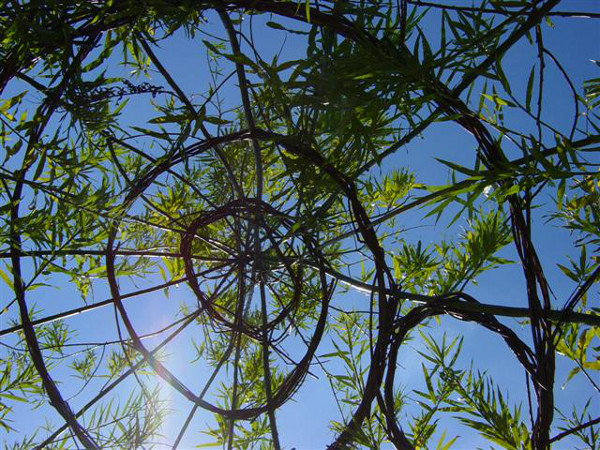
“It is easy and fun to create willow hedges, bowers, dens, arbours and walkways. For the more adventurous, wigwams, chairs and sofas would be challenging projects. You can make garden rooms, create childrens’ play areas and provide privacy more quickly than with a more traditional hedge.” – Royal Horticultural Society
Contents
What are living willow structures?
They’re garden features like fences, domes, arches, screens, windbreaks, play tunnels or more artistic creations, that are alive – made of willow. Willow is a most amazing plant. You can cut off a length, stick it in the ground, and it will grow. You can stick it in the ground horizontally and it will root downward and shoot upward. You can even stick it in the ground upside down and it will take! It grows incredibly quickly, making it a prime candidate for a lot of research into use for biomass burning. It also loves water, and therefore can be planted in very wet ground, where other plants would not thrive.

A living willow dome in summer; you can build them any size, and kids will love it. (Image: Julie Starks)
Its uses seem endless. Living willow has been used as an artistic medium, creating living sculptures for example. Many community gardens and allotment projects have created structures for practical reasons; to give shade, to sit on, act as a wind-break or to screen off various areas by making a ‘fedge’. A fedge is a cross between fence and hedge; a sort of living fence.

2-year-old willow rods (right), 1-year old growth (middle) and young whips (left) with a roll of Mypex.
Living willow archways – good for aesthetics, shade and plant support – are a great favourite with schools. Children can take part in planting the rods in the winter months and watch as their forlorn little sticks transform into lush green creations in the spring of that same year. And dried, the whips of the willow are widely used in the making of countless things including baskets, wreaths, shelters and paper lanterns.
3-year old living willow fence (or ‘fedge’); forms a boundary, neighbours’ dogs and kids can’t get through. Gives privacy in summer, when it’s covered in leaves (here’s a more detailed guide to building a bigger structure).
What are the benefits of living willow structures?
Creating structures with willow is easy to do yourself and doesn’t cost very much; nothing in fact if you have your own source of willow. It can be extremely satisfying, but can also provide valuable educational opportunities.
It’s also a resource – you can harvest new growth as whips to make baskets etc. Plus willow structures can provide height very quickly if needed in your garden.

Willow tipi. (Image: Wildworks)
From an environmental perspective, as your structure is alive, it will absorb carbon from the atmosphere; it doesn’t involve any factories or manufacturing processes, and doesn’t require any concrete, creosote or other toxic preservatives – unlike your common or garden fences, seats or arbors. It’s prettier than a fence, too; and if you can cut the rods from a tree or existing fedge, it’s free.
It also provides a habitat (and food) for wildlife, and its leaves enrich the soil (or your compost heap) every year.

New fedge coming to life in spring.
What can I do?
Willow needs to be harvested in the colder months. This is because the sap is down at this time of year, and it is this sap which makes them brittle. Remember – if it’s sappy, it’s snappy! Professional growers cut from the beginning of December through until March, so plan to create your structure in the colder months. Pick your variety with care. A firm favourite is Salix viminalis but for added interest, you can select by stem colour. There are greens, browns, silvers, purples, oranges, reds and yellows to choose from. It’s pretty cheap to buy willow and the beauty is that once you have some of the right variety, it doesn’t take long to grow some of your own to harvest.
Maintaining a living willow tunnel (in the winter, when the sap is down and the rods are more flexible); you can also snip off excess growth at any time of year.
Consider your site carefully. If you’re building your structure on an allotment, remember that if you plant it too close to your vegetables it will compete with them for nutrients and water. Likewise, if you don’t clear an area of turf on a lawn where you are about to put your structure, it’s possible (but not certain) that the grass immediately surrounding the base will yellow due to water shortage. Also if you plant very close to a wall, roots have been known to cause structural damage. Willows have very large tap roots, so be careful not to plant them over water or sewage pipes. And remember, willow is a living thing, so won’t do well in the shade of another tree. In general, create a willow structure as far away from anything else as is practical.

Newly-planted fedge and arch in winter, in an urban garden in London, to hide compost bins.
The other thing to consider up front is what mulch you will use. Old hessian-backed carpet is fine, as is cardboard (though this can be fiddly). A ground cover called Mypex is also widely used. This is woven polypropylene (plastic) which allows the penetration of rain water whilst preventing loss via evaporation. It is also excellent at suppressing weeds, which will act as competition to your willow. Mypex is more effective and easier to use, but if you want your structure to be as green as possible, then biodegradable carpet or cardboard is for you. Once the project is planted, the mulch can then be covered by wood chips, sand, compost or other material you might have to hand.

Inserting a window into a fedge – made from 2 whips wound around each other and tied off with a third one; all ties can be done with willow rather than string or twine.
When you’re ready to start, clear a strip 60cm wide along the length of where you wish to plant, so competition (weeds, grass etc.) is reduced to a minimum. Large willow rods, which will be about 2 years old when cut, will provide structure. They can be put in every metre or so, and need to go down to a depth of about 30cm. Use a spike to make a pilot hole, then trim about a centimetre off the bottom of a rod. Make it an angled cut – about 45 degrees – so there’s a point at the end. Then place the rod very firmly in the hole, and tread round the area to firm up. Plant rods in pairs at the desired width apart, and then wind and tie the tips together at the height you want your arch to be. Further structure is then added by tying the individual arches together.
Some artistic applications of living willow.
For a fedge, space between the larger rods is filled with smaller ones which will be a year old when cut. These are planted about 15cm or a hand-span apart, 15cm deep and at a 45 degree angle, then woven in and out of each other to create a self-supporting lattice shaped arrangement. The tips are then twisted and wound together. Any additional tying off can be done with little willow whips, which are bendy enough to act just like string. And remember, willow is a natural thing, so you don’t have to be too preoccupied with straight lines! A meandering fedge, or one that undulates can look far more interesting that a straight or symmetrical one. All sorts of shapes can be created this way, and combined. Domes and wigwams are firm favourites, but some very interesting living furniture has been made in this way too. See books or websites for inspiration (see resources).

Tying off with bits of thin willow ‘string’.
The downsides to willow structures are really the same as the upsides! Because they grow so quickly, you’ll need to prune them a lot or they will quickly get out of hand. You’ll also need to be attentive to their thirst, especially in the early days. Many a school archway has met its end while everyone is off on their Easter hols. Having said that, it’s possible to dig up a sculpture that is taking over a space, or to replace one that has died.
Specialist(s)
Thanks to Scarlett Penn of WWOOF UK for information.
The specialist(s) below will respond to queries on this topic. Please comment in the box at the bottom of the page.
 John Waller has been involved with the environment, ecology, woodland management and conservation since 1990. He is a qualified tree surgeon and coppice-worker and makes a range of woodcraft products. He set up his own business, Underwoodsman, in 2000 and now runs courses and offers woodland advice and tree surgery services across Kent, Sussex and into South London.
John Waller has been involved with the environment, ecology, woodland management and conservation since 1990. He is a qualified tree surgeon and coppice-worker and makes a range of woodcraft products. He set up his own business, Underwoodsman, in 2000 and now runs courses and offers woodland advice and tree surgery services across Kent, Sussex and into South London.

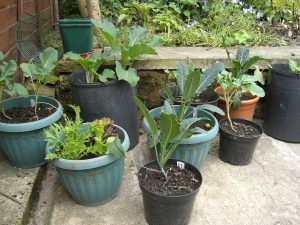
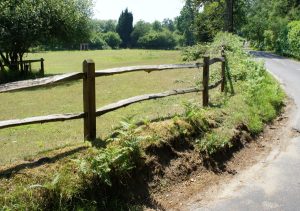
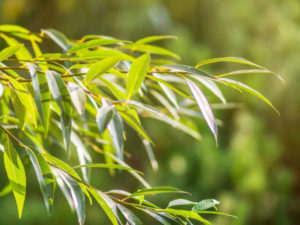
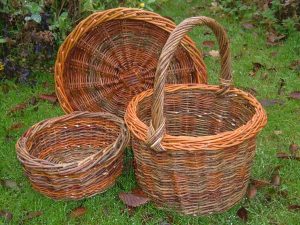
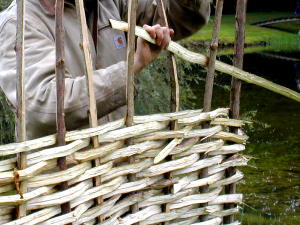
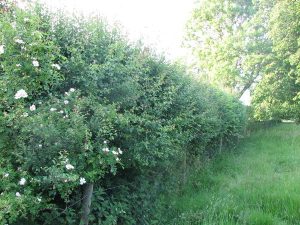
32 Comments
I planted a living dome last week. I cut wild rods and they had already started leaving out a little bit before i cut them. Now the leaves are crispy a week later. Are they dead? Is there any hope? I have a few theories on what i did wrong: one i probly started too late, but i didn’t even know about this idea til the day before i did it. 2, they may have dried out as they were lying in my garage one night after cutting (again, living structure was not my original plan, so i hadn’t stuck them in water right away). 3) my pruner tool was dull and the cuts maybe weren’t clean enough? 4) maybe the rods were too thick or older. The only ones over 6 feet were 3 year old rods. The Leaves are much bigger on the wild ones i cut from now…..would it be worth it to try again? I’d hate to have to wait a full year.
Hello Melissa
You were too late with your planting. Rods should go 30-60cm in the ground during the dormant season, to allow root development to occur before they shoot leaves. They may reshoot if you’re lucky, but you will need to water heavily and regularly. The leaves have transpired moisture, but without roots, the rods have desiccated.
John Waller
Underwoodsman Ltd
Hi John,
I work at a school and in our grounds we have created a willow dome. I have received a complaint from a neighbour that it is too close to her property wall and that the roots of willow trees are invasive etc and could cause damage. I have read about the impact of roots from trees, but will the root system from the dome create damage. We are approximately 20ft from her wall and 25ft from her property.
Your advice would be much appreciated.
Many thanks
Paul
20-25 feet is on the close side! There are many factors to consider… soil, willow species, drain runs, modern plastic drains or old clay pipes, water availability, willow management, foundation type… I’m not a structural engineer and without the above information, it is impossible to advise. That said, if the property/wall has modern foundations, and drain runs are absent, or in plastic, and are in good condition, and the willow is trimmed regularly, it is unlikely to cause an issue. To be safe you could consider a root barrier?
John
Many thanks for your advice John.
Hi, I have (had!) a wooden arbour that has sadly collapsed under the weight of wisteria, honeysuckle & clematis due to rotten posts. I am thinking of replacing it with a living structure. Would a willow arbour support climbers through it? It is also next to a pond, would this be an issue? Thank you for your advice. Kate
Hi Kate – I’ll see if John wants to add to this, but I can tell you that a living willow arbor can support climbers. We have one and it does (honeysuckle), and willow likes water, so being next to a pond isn’t an issue (for the willow at least).
Thank you Dave Darby, that’s useful info. It’s not a natural pond so I was concerned for the liner. I’m still clearing the tangle of climbers at the moment so I’m afraid I will probably miss this season’s planting window but I’m contemplating options now.
Hello Kate. Dave is right… the living willow structure is capable of supporting climbers. However if your climbers are already well established and vigorous, and you intend to plant willow near to their root systems, the willow may struggle to compete. They generally do best if planted at the same time. The roots shouldn’t penetrate the liner of your pond, if it is in good condition. John
Thank you John. Lots of good advice much appreciated! Kate
Hi John – thank you for your helpful article. I live in Minnesota, USA and have been building a nature playground for the kids in our community. We plan to create a living willow tunnel next. Living willow rods are hard to come by and where I have found them, they are quite expensive ($7+ per rod plus shipping). Pussy willow (salix discolor and caprea, I believe) grow plentifully here and I’m wondering if I could harvest this variety myself and use it for the tunnel. Would pussy willow work well for a living tunnel or not?
hi all ! I have some rooted willow cuttings 3 – 4 inches tall in pots, am planning to make a willow tunnel, I want to plant them in situ where the tunnel will be, how many buds should I leave to create longer stems, thank you !
Hello Laura,
Sorry I missed your query. If you can find suitable rods to meet the design of your structure, any willow will grow if planted well. Pussy willow tends to grow stout and branched here, so is not very useful. However if you find larger stands of it (or of other willows), then longer, thinner rods will be forced up.
Best wishes
John
Hello Yvette
Willow doesn’t like root disturbance much… that’s why cuttings are planted in preference to rooted plants (they are also much cheaper and easier to plant!). However if you want to have a go, I would leave just one or two buds above ground. To encourage long rods, you need the plant to concentrate all its energy in one or two shoots.
John
Hi. We have just moved home and I am trying to come up with a solution for a more attractive hedge/fence – at the moment there is a rather unpleasant leylandii hedge and would really like to create a ‘Fedge’ – we live in a semi-detached property and the hedge would be approx 22ft away from the house(s) – I don’t no much about willow,hedges – would this be ok for the properties given the distance. Thank you
Hello Jo, thanks for your message. See items 3 and 4 above – I think that should answer your question, let me know if not.
Hi John,
We would like to build a small living shelter/arch in our garden, but the spot we had chosen is only about fifteen feet from the front of the house – far too close for willow! Can you recommend any other plants that might be more suitable?
I live in Palm Bay, Florida Zone 9 will it grow here?
Hi John, We have two willow domes at school that have been neglected for a couple of years and they now have huge rods shooting into the sky! Can I just prune these back to the original shape? Do I have to wait till later in the winter or could I make a start now? It is still full of leaves. Thank you!
Hello Siobhan. You can do it now if you need to. If you can wait until the leaves have dropped off, you’ll be able to better see what you’re doing. Also you’ll be able to weave in some of the rods more easily.
Hi John,
We put a short board fence between the planted garden area and the open playground 8 years ago. It was cheap, but already some of the posts show some rot & some boards do too. Is there a way to weave in willow to “fedge” our fence, that is, grow living posts, etc. Not explaining it well, the notion is to how we might use this fence to be a “nurse” to a living fence that will replace it.
Hello Kathleen. As long as the willow has access to light, and is planted in the usual way, there’s no reason not to plant a fedge directly adjacent to a fence. I would keep the fence and fedge separate so that removing the fence when the time comes, is easier. It will also be much easier to weave in the growth from the fedge if separated from the fence. John
Can you make a willow fence out of the Japanese Will (Dapples Willow)?
Apologies, Lisa, but I’m unfamiliar with Japanese Will so am unable to help.
I built a 2m long willow tunnel at the start of a pathway next to my house. It went up on December 2021 I didn’t consider the impact of roots at the time – it is c. 5 or 6 feet from the house. Is this an issue? Should I move it?
Hi John, I am in Australia, is our normal weeping willow able to be used in these structures, thanks.
I have 2 living willow in pots. If I were to put them in the ground would the roots spread like a normal willow
I have a Pussy Willow tree in my garden and I am thinking of building a Fedge between my garden and next door. I have vegetables on my side and he has roses and perennial flowers on his side .How would the Willow effect the plants.
Regards Michael
Hello @Carole March,
Apologies for the delay. Willow roots are very good at seeking water, and will happily invade drains given the chance. However if you have modern, plastic drains in good order, they should not be leaking, and the willow will have no entry point. If your drains are old and/or damaged, the willow will invade the drain through the cracks.
Hello @Bev Harris
Sorry for the delay. All willows have the capability to root easily from cuttings or long rods and poles, so weeping willow can be used. However willows grown from coppice, in a plantation, will form long, slender rods and poles, while those from free grown trees are likely to be stouter and more branched. As a result, free grown willows have a generally poorer form and are less structurally appropriate for living willow structures.
Hello @john Wilkinson
Sorry for the delay. Yes they would. However, willow does not respond well to root disturbance, so it may be prudent to take some cuttings and plant these where you want them to grow, as well as planting out your potted trees.
Hello @Michael Radford
Pussy willow is vigorous in shoot and root, and will compete effectively for light, water and nutrients with neighbouring plants. However as a coloniser, it doesn’t like to grow where other plants are already established (like the rose?). Hence the willow may need watering and mulching well to establish itself, and once growing well, will need to be clipped or pruned hard to prevent strong competition, especially with the veggies. You might also consider a root barrier on the veg garden boundary with the fedge.